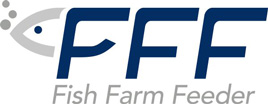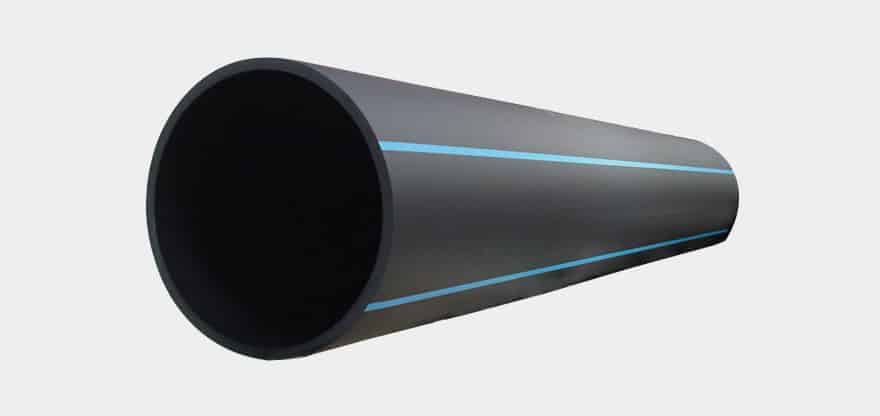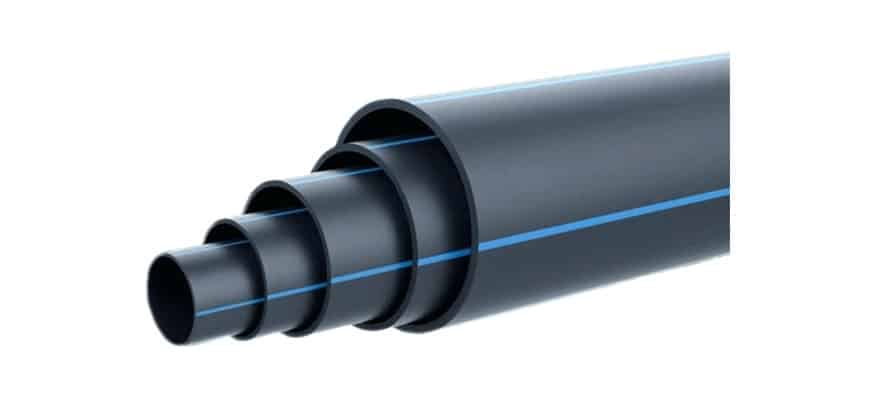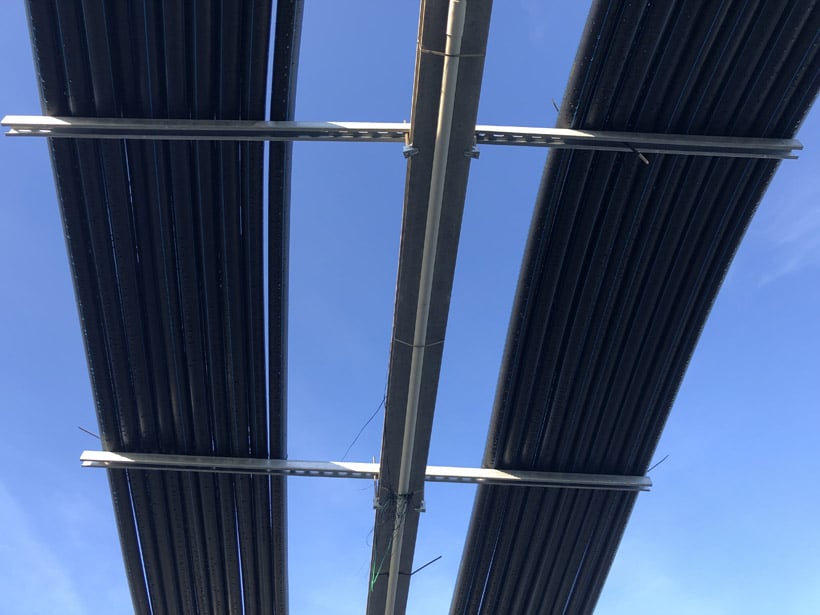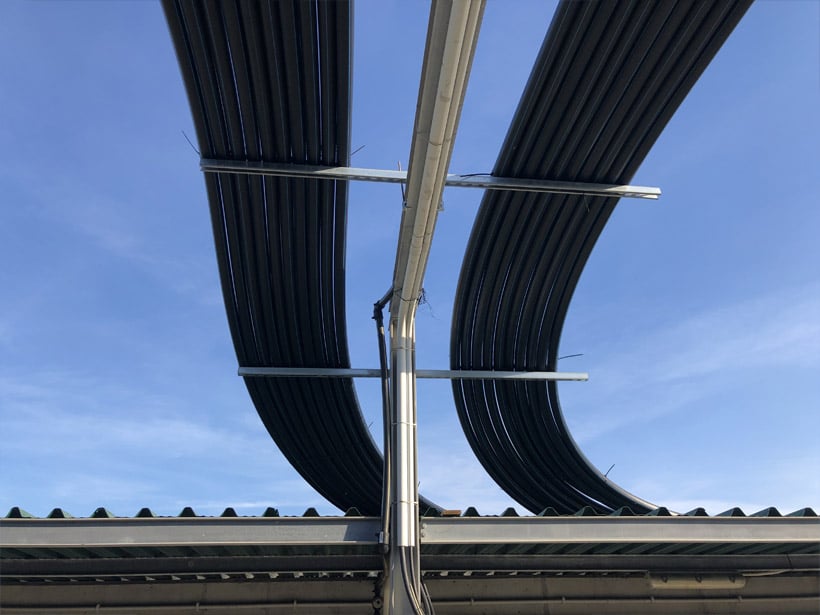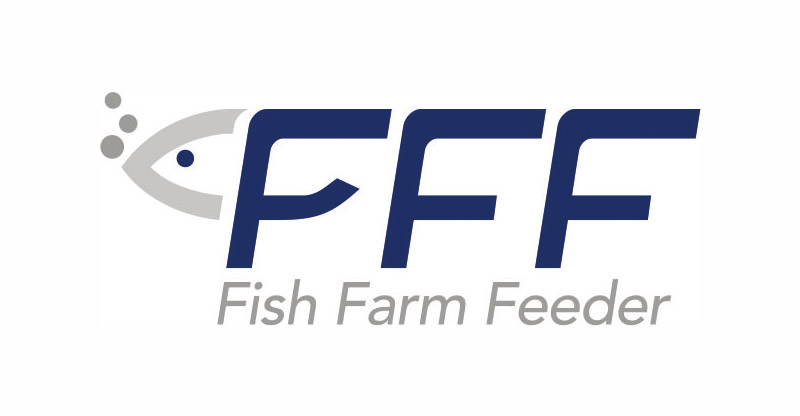The use of pipes to transport aquaculture feed, using air or water, has been in use for more than 30 years. First in sea farms and then in land-based farms.
The most common types of pipes used in aquaculture farms are:
- High Density Polyethylene, mainly when using air.
- Stainless Steel Piping, if using air, water or a chain drag system with discs.
High Density Polyethylene Piping Pads used in Aquaculture Farms
With FFF automated feeding systems it is recommended to apply high density polyethylene feeding pipes. Depending on the feeding parameters defined by the fish farm experts, FFF can propose one or another pipe diameter that should be connected to the feeding system for its optimal performance.
Piping in Pneumatic Feeding Systems and Pipes Installation in Farms
Several questions arise when using pipes and air to transport feed from automated feeder to tanks or cages in aquaculture farms. Among them you may ask: Can they affect the quality of pellets and the fish feeding as such?
» Pellets Breakage
During the transport of fish feed to tanks or cages in a fish farm, it can be affected by:
- The feed quality.
- The pipes installation.
- The amount of used air.
If using the latest generation pellets, in a well-designed and well-made installation, where the piping is placed and connected correctly and with optimized air parameters, the feed breakage should not exceed 1%. It even does not mean that 1 % of feed is lost or converted to dust. Some pellets can break, which means that they can be also eaten by the fish.
In pneumatic systems, air is used to transport the feed inside a high density polyethylene pipe.
To guarantee the integrity of the feed, it is necessary to:
- Carry out a correct installation of the pipes in the farm -> as straight as possible and avoiding bends with sharp angles.
- Use optimum air flow rates and/or pressures depending on the amount of feed, the size of the feed and the distance to be sent.
» Clogging
To avoid clogging, pipes should be installed as straight as possible, avoid sharp angles. Also the correct amount of air should be used to prevent transporting more pellets than it can handle by the system.
» Pellets Remains in the Pipe
To avoid that feed remains in the piping, the manufacturers of aquaculture feeding systems should use the exact air flow for the correct delivery of feed. Extra air before and after delivering each dose can support avoiding any pellets rests in the piping.
» Pipes Lifespan
The correctly installed pipes, taking into account the environmental factors, should last between 5 and 10 years. Anyhow during the pipe installation, it is important to have in mind that at some point, it may require that a section of the pipeline should be easily replaced.
On the other hand, the providers of fish pellets used in aquaculture have nowadays the technology that can guarantee the quality and robustness of the feed, avoiding any problems when air is used for transporting the pellets.
Examples of high density polyethylene piping installations with automated pneumatic feeding systems you can find in the following link.
